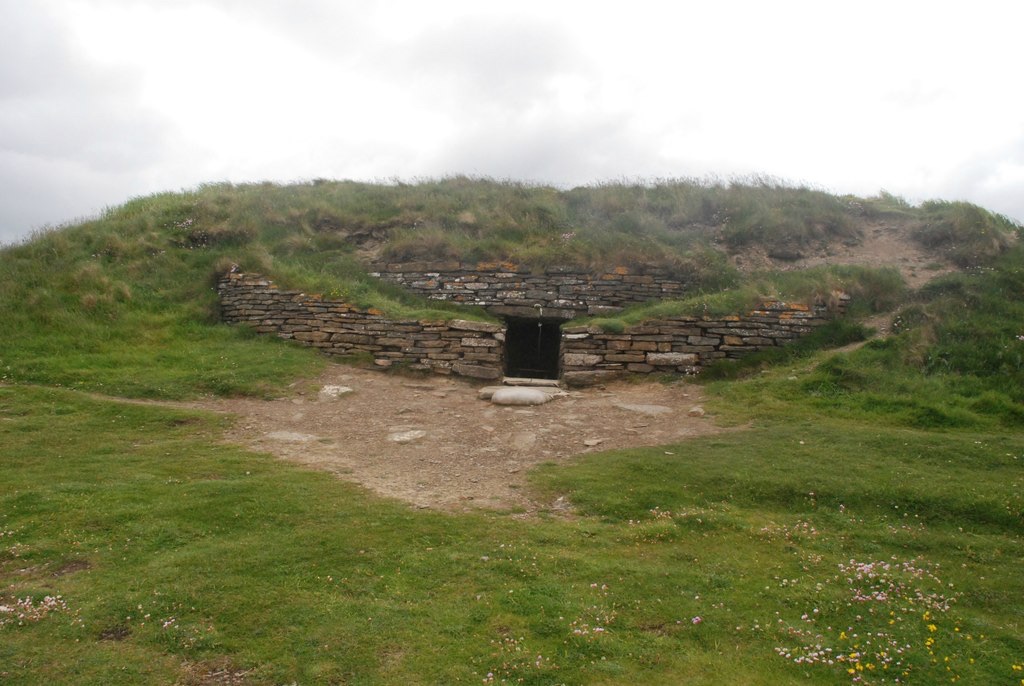The Tomb of the Eagles, also known as Isbister Chambered Cairn, is a Neolithic chambered tomb located on the island of South Ronaldsay in Orkney, Scotland. Discovered in 1958 by local farmer Ronnie Simison, the site dates back to around 3000 BC. It gained its nickname due to the discovery of around 16,000 human bones and 725 bird bones, many of which were from white-tailed sea eagles. This suggests that the eagles held some significance for the tomb’s builders. The site offers a fascinating glimpse into Neolithic life and death, and it has become an important location for archaeological research and public interest.
Get your dose of History via Email
Historical Background of Tomb of the Eagles
The Tomb of the Eagles was unearthed quite by chance. Ronnie Simison, a farmer, stumbled upon it while looking for stones to build a wall in 1958. His curiosity led to a remarkable discovery that would captivate historians and archaeologists alike. The tomb dates back to the Neolithic period, around 5,000 years ago. This era was a time of great change, with the introduction of farming and permanent settlements.
Archaeologists believe that the community who built the tomb were skilled farmers and hunters. They lived in a society that valued the dead and possibly revered the eagle. The tomb’s construction is a testament to their engineering prowess. It features a long stone passageway leading to a main chamber, with side chambers branching off. This design is typical of Orkney’s Neolithic tombs.
Over the years, the tomb became a repository for the dead. It served as a communal burial site, a practice common in Neolithic times. The presence of eagle bones alongside human remains is unique and suggests a totemic or spiritual significance. However, the exact nature of this relationship remains a mystery.
There is no evidence that the tomb was the scene of any historically significant events. Yet, its very existence provides valuable insights into the beliefs and practices of Neolithic people. The site has not been inhabited since its original use. It stands as a silent witness to a distant past.
The Tomb of the Eagles is not just a historical site; it is a cultural touchstone. It connects us to the ancient people of Orkney. Their legacy continues to intrigue and educate those who visit this windswept isle. The tomb remains an active archaeological site, with ongoing research shedding light on its construction and use.
About Tomb of the Eagles
The Tomb of the Eagles is a striking example of Neolithic architecture. It is a chambered cairn, a type of burial mound common in Neolithic Britain. The tomb’s structure is primarily built from local stone, with a large mound covering the chambers. The builders carefully selected and placed these stones to create a lasting monument to the dead.
The entrance to the tomb is a low passage, around 3.5 meters long. Visitors must stoop or crawl to enter the main chamber. This chamber is a large, rectangular space, with smaller cells branching off to the sides. These cells likely held the remains of individuals or groups, separated by their relationship or status.
The construction methods reflect the builders’ understanding of their materials. They used dry stone walling techniques, with no mortar to hold the stones together. Instead, they relied on the weight and placement of the stones for stability. This method has ensured the tomb’s survival for millennia.
Architectural highlights include the use of massive stone slabs, known as megaliths, to form the walls and roof of the chambers. These slabs would have required considerable effort to transport and erect. Their presence indicates the importance of the tomb to its builders.
The site’s location, overlooking the sea, may have held symbolic significance. The horizon line could represent a boundary between the worlds of the living and the dead. The builders’ choice to place the tomb in such a prominent location suggests a deep respect for those interred within.
Theories and Interpretations
Several theories exist about the Tomb of the Eagles. The most prominent relates to the presence of sea eagle bones. Some suggest these birds were totemic animals for the tomb’s builders. They may have symbolized power, freedom, or a connection to the divine.
Another theory is that the tomb served as a communal burial site. This practice would align with the collective nature of Neolithic society. The tomb could have been a place for ritual and remembrance, where the community gathered to honor their ancestors.
The mysteries of the tomb extend to its construction. How did Neolithic people transport and lift the heavy stones? Some researchers propose the use of wooden rollers or sledges, combined with human or animal power. The exact methods, however, remain speculative.
Historical records from the Neolithic period are non-existent. Therefore, interpretations of the tomb must rely on archaeological evidence. This evidence includes the layout of the tomb, the artifacts found within, and comparisons to other contemporary sites.
Dating of the tomb has been carried out using radiocarbon methods. These tests have confirmed the tomb’s age as approximately 5,000 years old. The accuracy of radiocarbon dating provides a solid foundation for understanding the timeline of the tomb’s use.
At a glance
- Country: Scotland
- Civilization: Neolithic Orkney
- Age: Approximately 5,000 years old (3000 BC)
Conclusion and Sources
- Wikipedia – https://en.wikipedia.org/wiki/Tomb_of_the_Eagles

